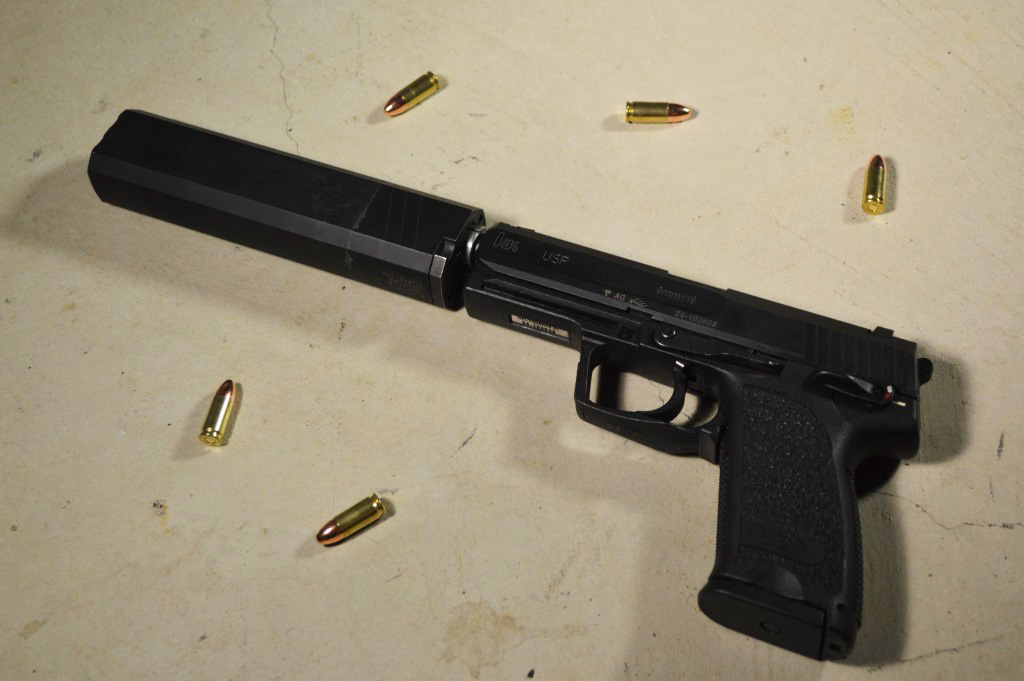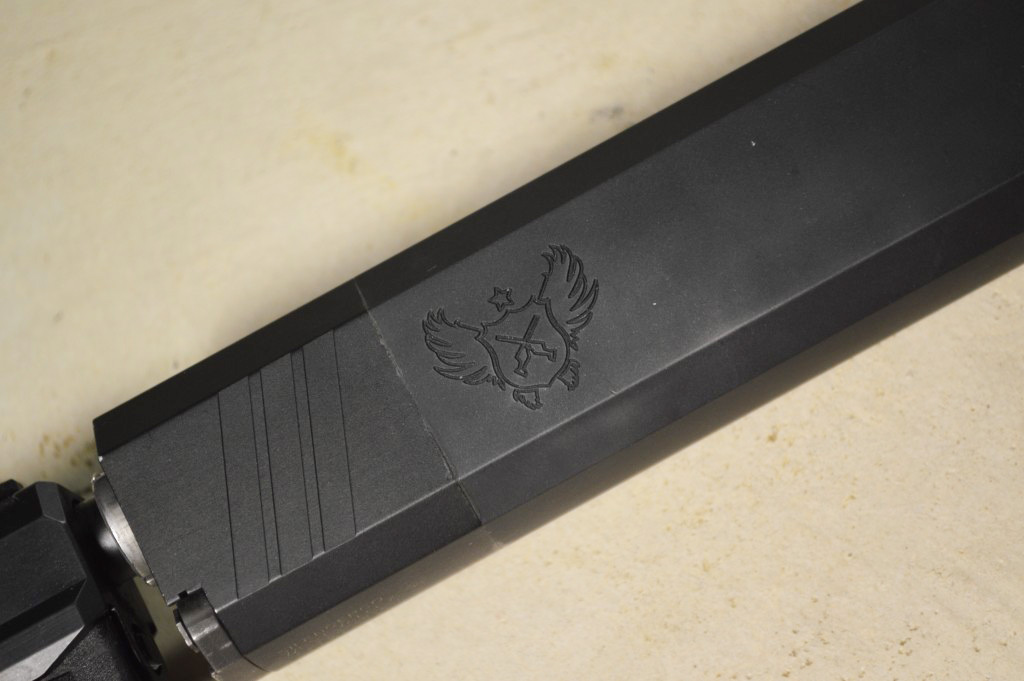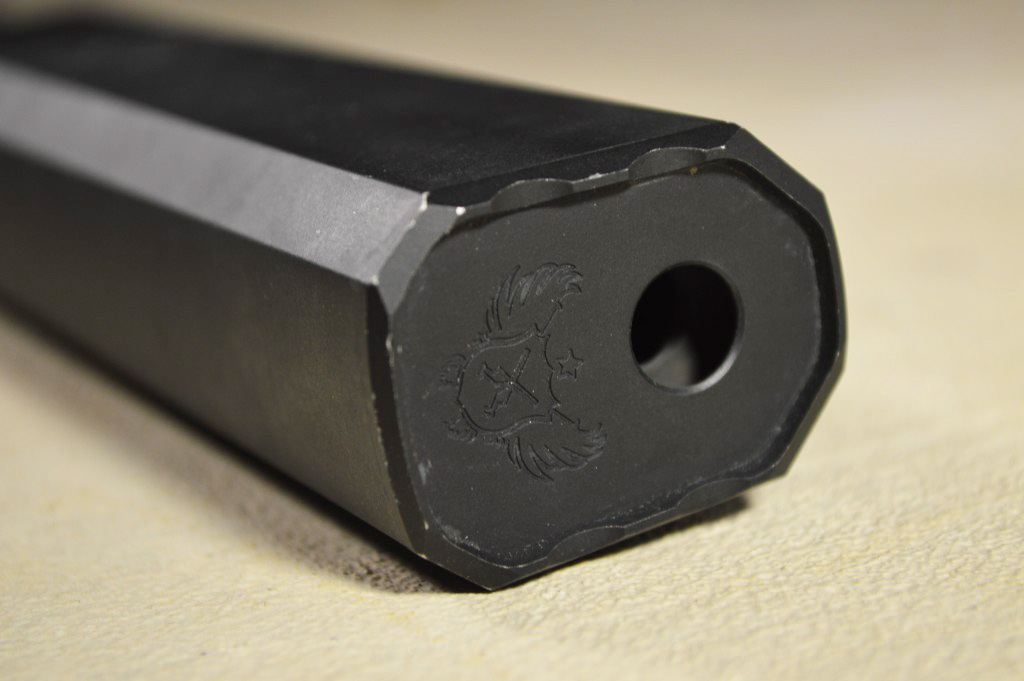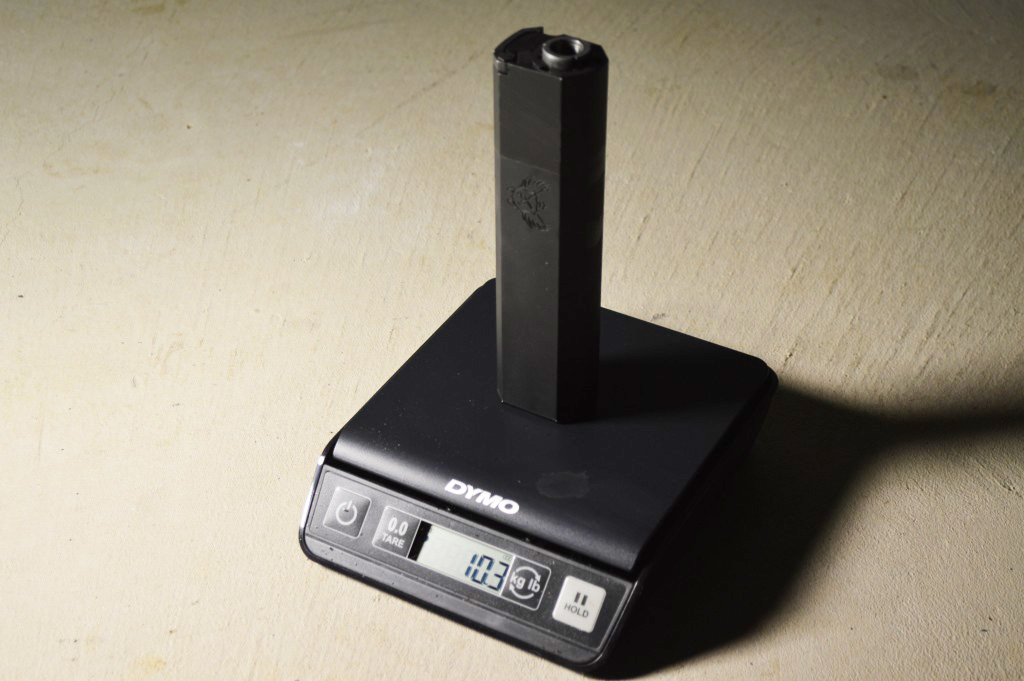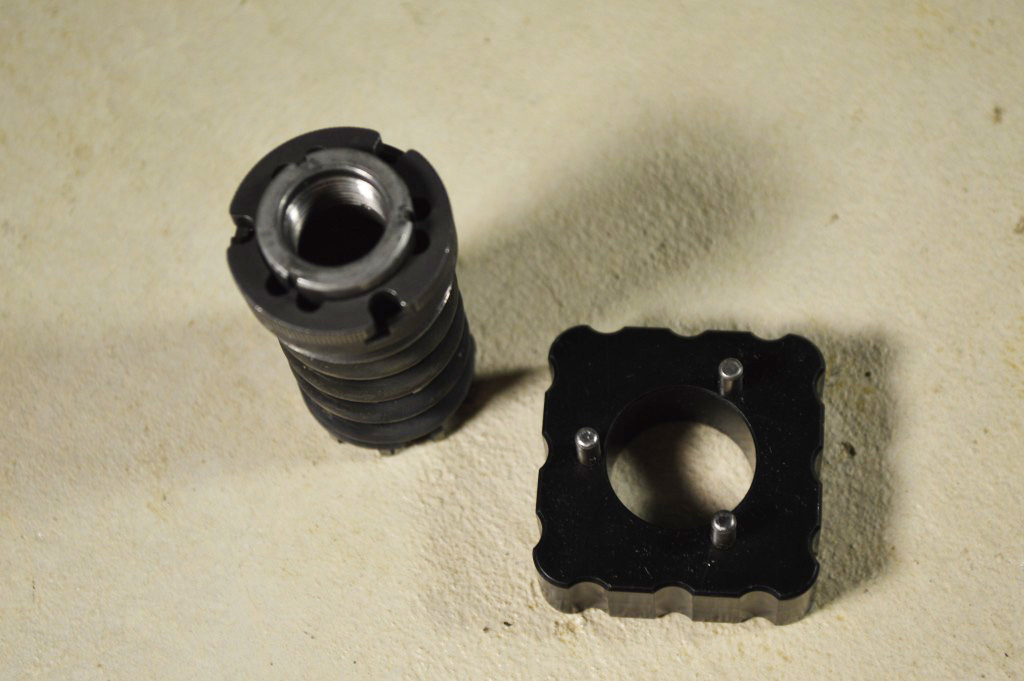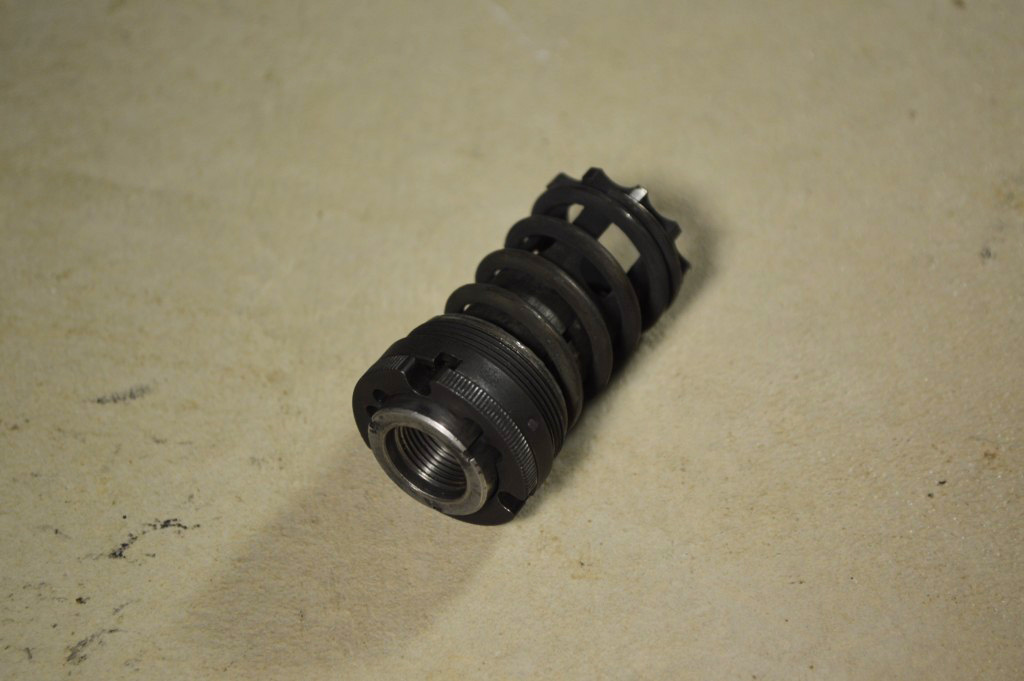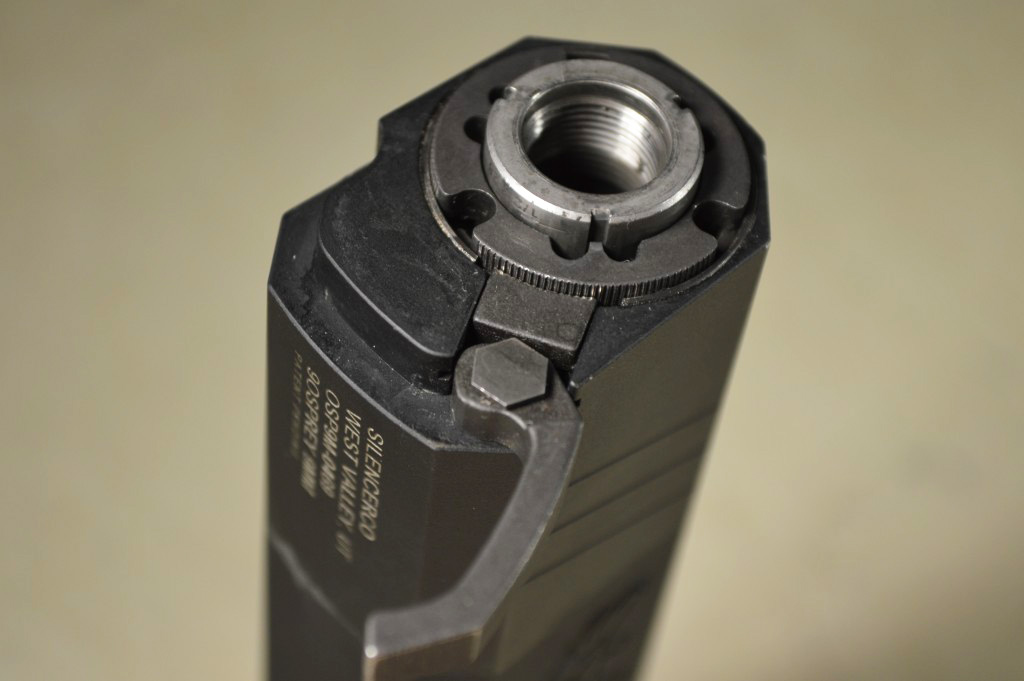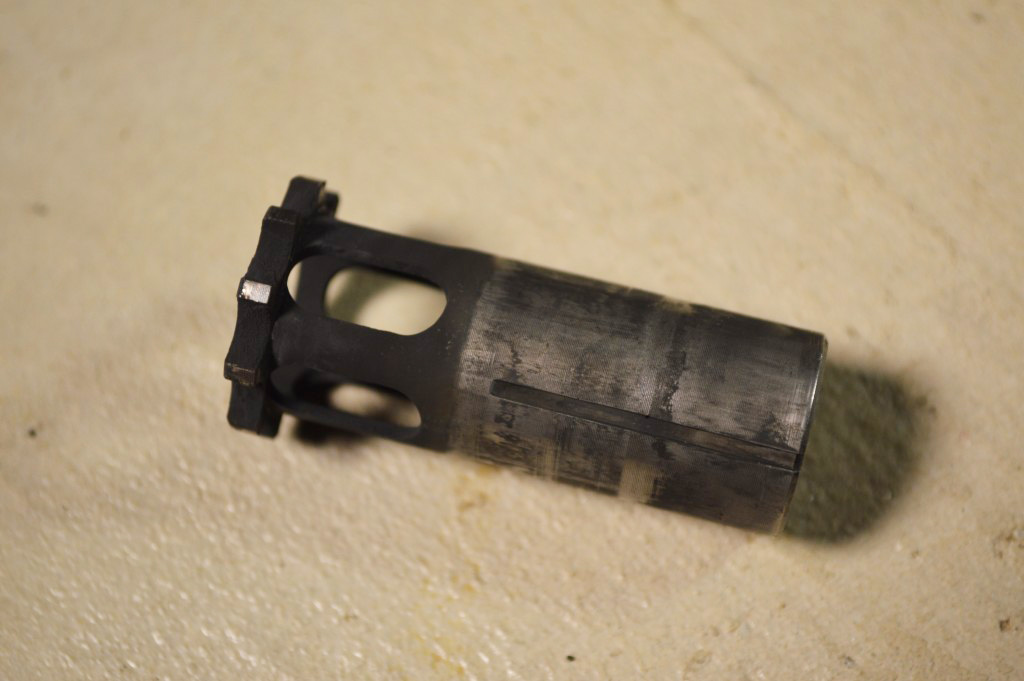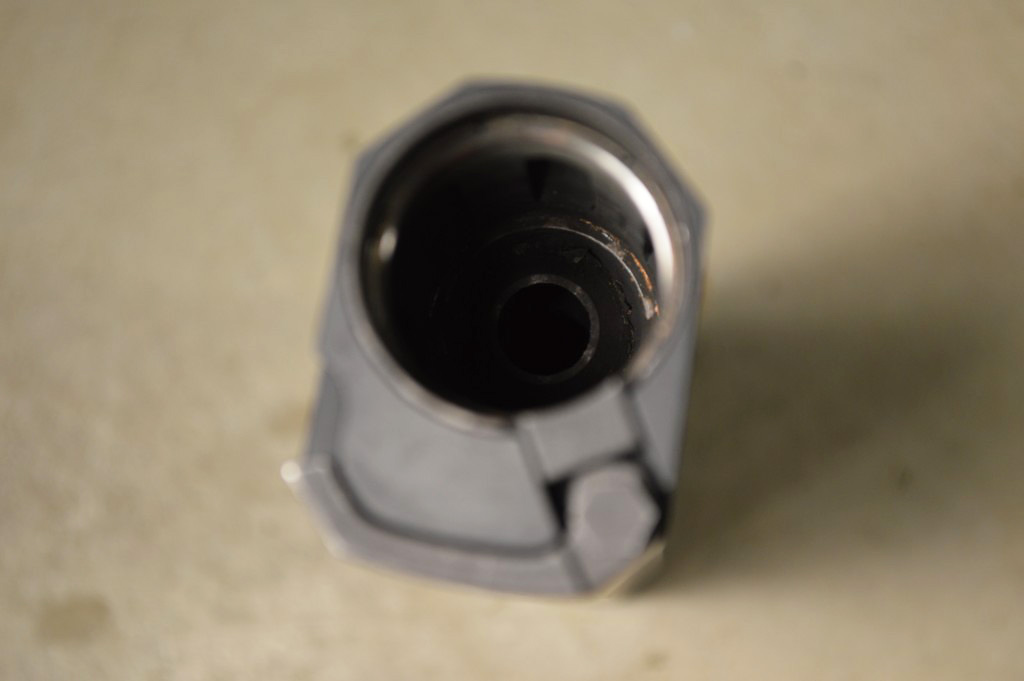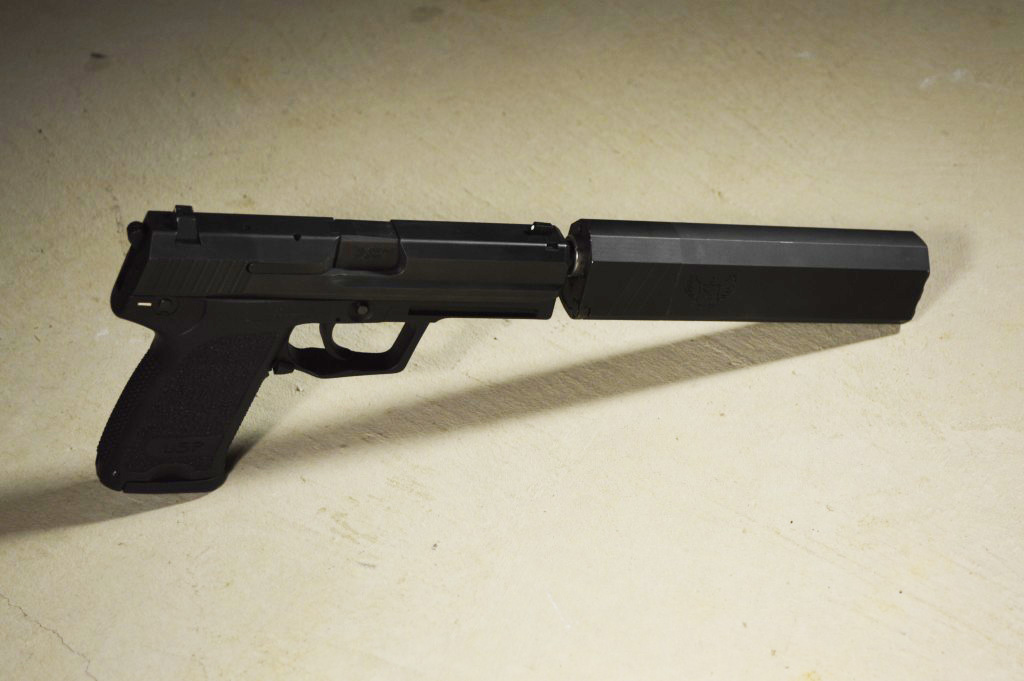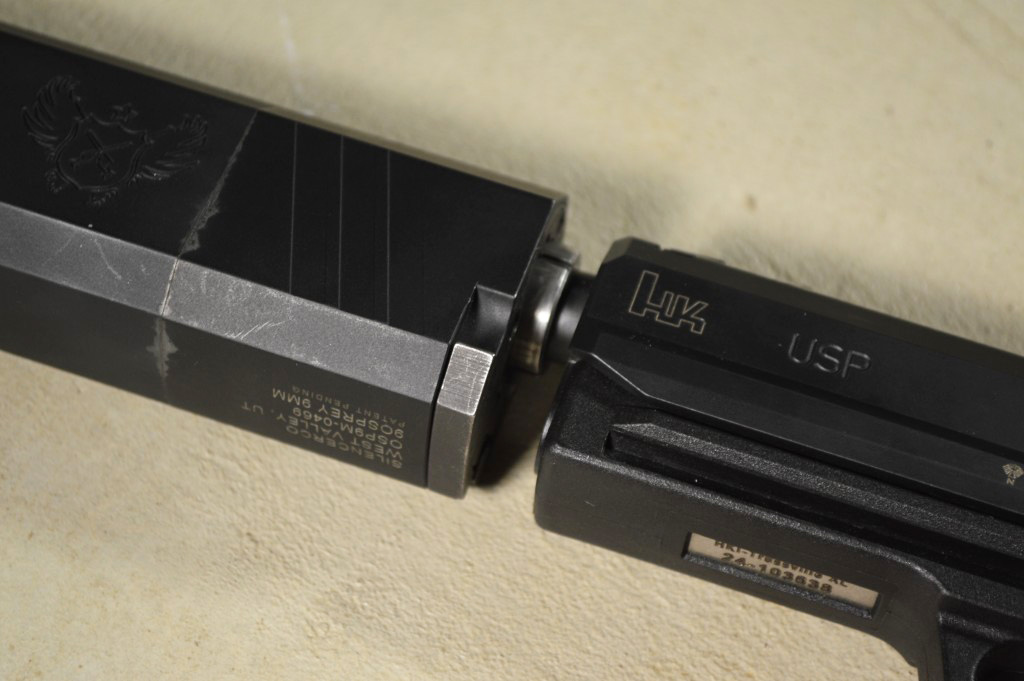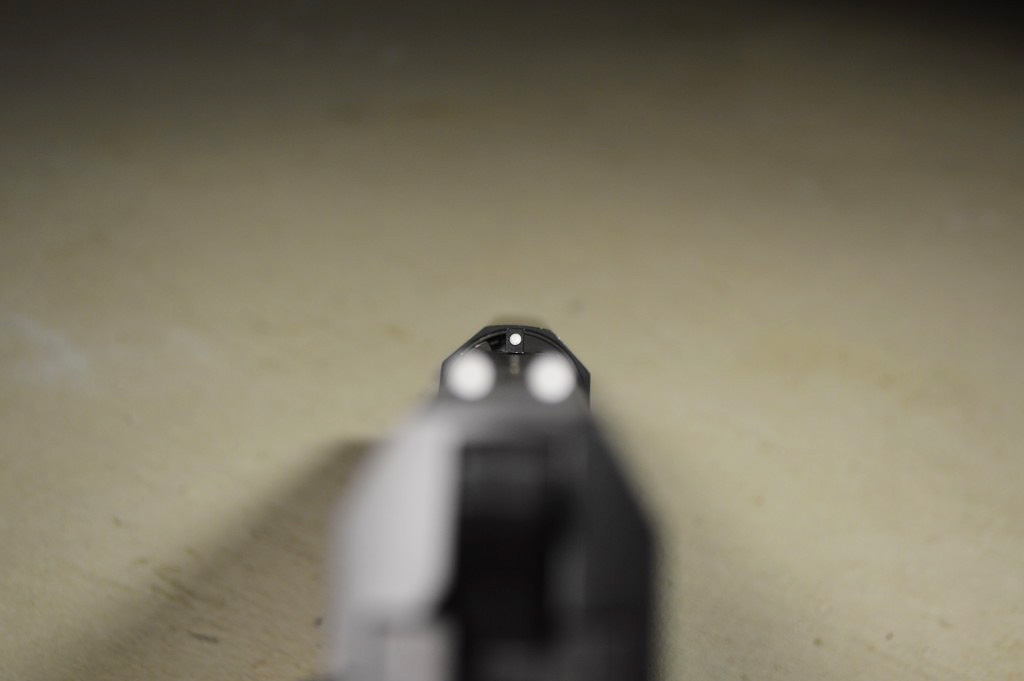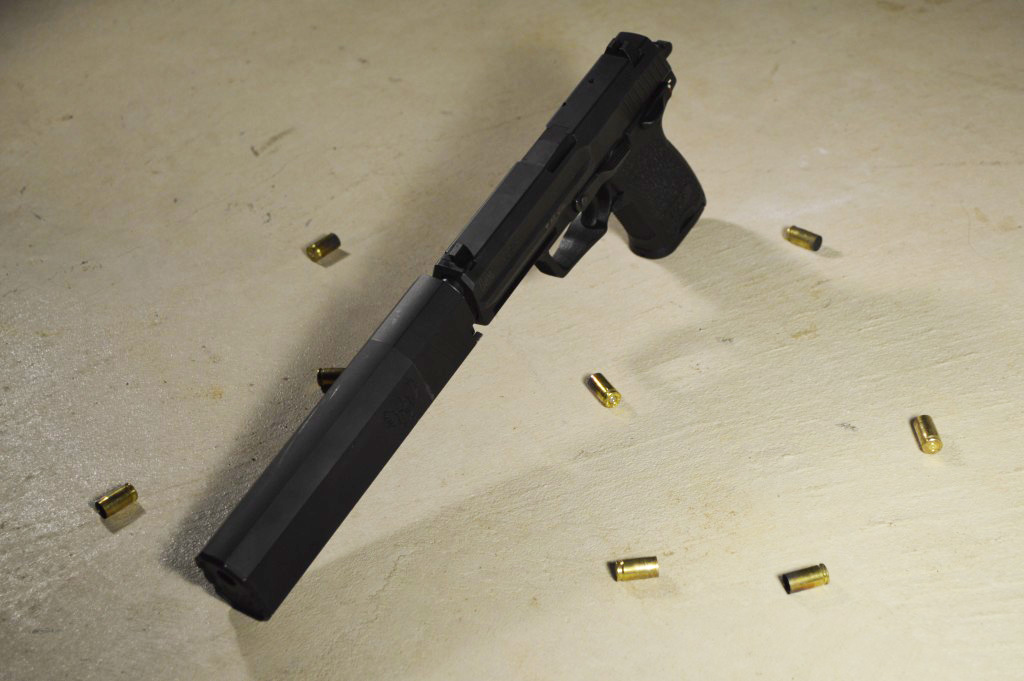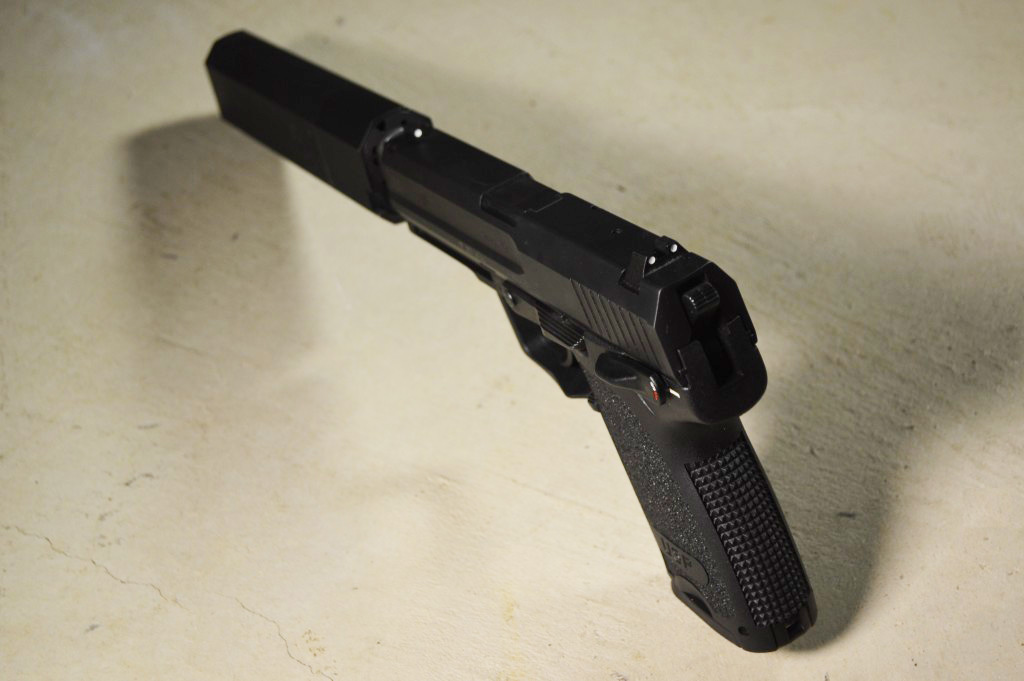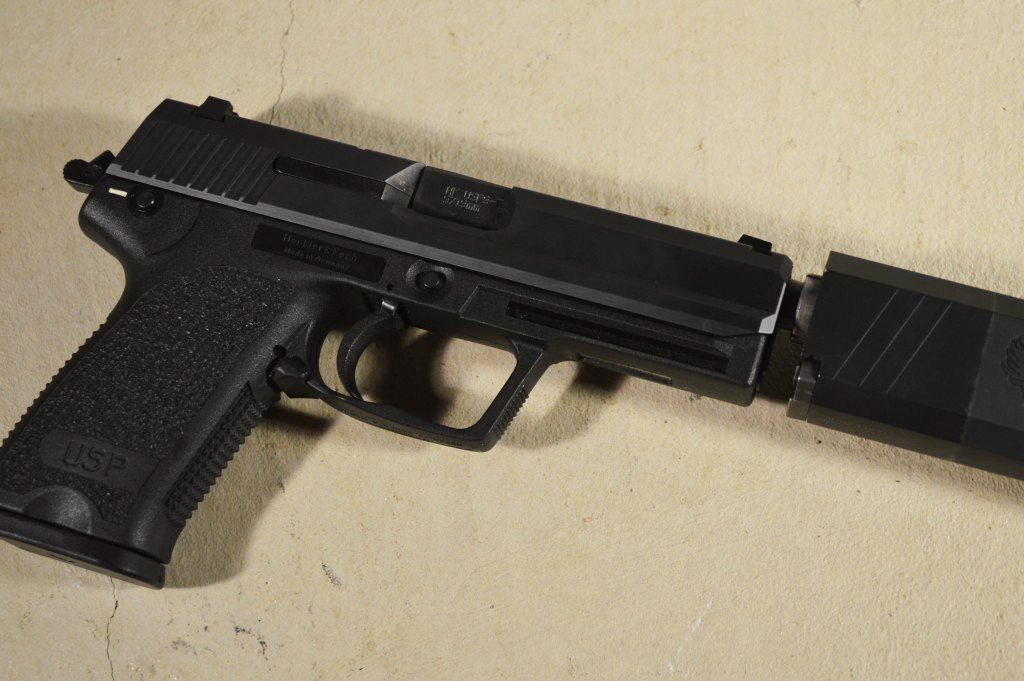Silencer Shop Authority: SilencerCo Osprey 9 Review
When Hiram Percy Maxim first designed his original firearm silencer in the early 1900s, the chances are good that he had no idea his new invention would later be considered unusual in any way. As the father of suppression and a pioneer in mufflers of all types, Maxim chose to drill the can’s bore off-center to facilitate the use of the relatively low iron sights found on most rifles of the era. Because the Nielsen device had yet to be introduced, the use of suppressors on pistols was limited, and Maxim surely had not developed his first asymmetrical silencers with handguns in mind. As rifle designs evolved over the mid 20th century and suppressor demand was stifled by NFA regulations, silencer development slowed, and the market that did exist migrated towards simpler, symmetrical silencers.
While Maxim’s original vision was mostly phased out over the last century in favor of what we consider “traditional” configurations, pistol shooters were left quite literally in the dark as newer suppressors completely obstructed handguns’ factory sight picture. Often, shooters with suppressed handguns had to replace the sights on their host guns with expensive aftermarket options, or learn to “sight through the can” with only marginal precision.
As the suppressor market has grown and evolved over the past half-decade, so too have the number of enthusiasts who own multiple suppressors or seek specialized silencers for particular firearms. To answer the cries of hand gunners, a young SilencerCo beat AAC’s Black Box concept to market with the introduction of the eccentric Osprey line of pistol suppressors back in 2010. Remarkably, even after five years, the Ospreys remain some of the most popular silencers in the industry, and the line has filled out to include 9mm, .40 S&W, .45 ACP, and .45 ACP K (short) options. Intrigued, I reached out to my friends at Silencer Shop to arrange some time with SilencerCo’s oddball 9mm suppressor. After some time with the Osprey 9, I can see why this family of silencers has such staying power in what is otherwise a very dynamic competitive landscape.
Size and Weight
In all honesty, the SilencerCo Osprey is a remarkably compact 9mm suppressor. At precisely 7 inches long with a piston installed, the Osprey ranks among the shortest 9mm cans on the market. On a pistol where each additional inch shifts the pistol’s center of gravity farther forward and imparts more torque against a shooter’s dominant wrist, this fact is a huge deal. If readers are looking for a very rough point of reference for the Osprey 9’s overall size, the suppressor is just around 1/2” longer than my clamshell-style eyeglass case and about 1/4” narrower.
The Osprey’s tube is oddly shaped when compared to most other pistol suppressors, but the octagonal cross-section is designed to maximize internal volume as much as reasonably possible. The width of the silencer sits right at 1.30”, which is very close to the diameter of many traditional suppressors, but the Osprey is also a whopping 1.75” tall. These dimensions mean that the Osprey 9 is a good bit more voluminous than vanilla 1.375” diameter round suppressors of similar length. As we will see in the Range Report, the roomy tube goes a long way in combating blowback and negating any disadvantages the eccentric design might pose to the Osprey’s suppression capabilities.
Sadly, SilencerCo’s decision to roll with a fairly large outer tube undermines one of the Osprey’s major selling points. While the AAC Illusion I recently tested allowed for unfettered use of factory sights on every pistol I tested, the story with the Osprey is quite the opposite. Even though the Osprey is nowhere near as obtrusive as say, my Octane 45, it does interfere with standard sights on all pistols I have tested, including my USP and Beretta M9. The sights are still usable by “sighting through the silencer,” but the white painted dots on the aforementioned pistols’ front sights were blocked by the suppressor. Considering that the profile of the Osprey tube is essentially made to match the USP’s slide and the silencer is sold as optimized for use with factory sights, this fact is more than a little disappointing.
With a mostly aluminum baffle stack, the Osprey 9 is pleasingly light. According to my bargain postal scale, the Osprey comes in at 10.3 ounces. This is well below my Octane 45, which is frankly annoying at 12.1 ounces in weight. Unlike pretty much every other pistol suppressor I have tried, the Osprey 9 really does not seem to pull the muzzle of the handgun down while shooting.
Mounts
Like most modern pistol suppressors, the Osprey uses a Nielsen device, or booster assembly, to ensure reliable cycling on Browning-style and similar actions. As a swappable mount, the Osprey 9mm pistons are made of 17-4 stainless steel and are offered in 1/2×28, 1/2×28 XL, 1/2×36, M13.5×1 LH, and M13.5×1 LH XL thread pitches. The XL, or extra long, versions are intended to be used with pistols where the guide rod would otherwise interfere with proper cycling, like the Beretta 92 series.
Changing pistons is very simple with the Osprey, but there are some considerations that users need to make a note of before performing the swap. To unlock the retaining ring at the rear of the silencer that keeps the piston in place, we must first open the locking arm that tucks in along the Osprey’s bottom rear edge. With the arm open, the retaining ring is free to unscrew from the suppressor body using the included tool. Once the ring has been removed, the piston and spring simply slide out the back of the Osprey. Reassembly of the Nielsen device is simply the reverse of these steps.
Interestingly, the pistons used in the Osprey have become somewhat of a standard among several different suppressors and manufacturers. All but the earliest SilencerCo Octanes use the Osprey style pistons, Griffin Armament’s Revolution suppressors, and some of XCaliber Firearms’ SeaFire Diamond silencers all use the same (or similar, they aren’t necessarily interchangeable) pistons as the Osprey. In short, the Osprey piston design is simple and it works very well.
Because the Osprey is so oddly shaped, it is important to make sure that the suppressor is oriented correctly when attached to the firearm. Since it is unlikely that the silencer will align perfectly on every firearm, the Osprey can be rotated once mounted by releasing the locking arm and rotating the entire suppressor until the fat part of the tube faces downward. Once the proper orientation has been achieved, the locking arm can be closed, and the silencer is ready for use.
Shooters looking to use the Osprey on a pistol caliber carbine will also be pleased to know that a fixed barrel spacer is available. This small aluminum cage or tube replaces the piston spring and locks the Nielsen device. Since the barrel on most carbines is fixed and does not tilt or recoil like many pistols, the booster assembly should be locked to prevent damage to the suppressor.
Design and Materials
Underneath its two-piece anodized 7075 T6 (back cap) and 6061 T6 (front half) clothes, the Osprey 9 sports an interesting 7075 T6 monocore with four modified slant baffles and one wedge-shaped secondary blast baffle. Unlike practically every other silencer on the market, the Osprey’s true, conical, 17-4 blast baffle is threaded into the piston encapsulator and is not visible in most cutaways or disassembled photos of the Osprey. Because of the hearty monocore stack and steel blast baffle, SilencerCo rates the Osprey for use with ammunition up to and including subsonic 300 BLK. Since the rear cap of the suppressor is the serial numbered part, repairing the forward part of the Osprey in the event of a baffle strike is relatively trivial for SilencerCo.
For a suppressor that performs so well, it is surprising that the baffle stack is so simple. My understanding is that the wedge and slant baffles in the monocore are intended to promote bullet stability as the round travels through the suppressor. Also, the slanted baffles help to direct gasses to the lower portion of the suppressor, and their forward cant almost eliminates backpressure. The small wedge baffle just behind the blast surface seals off a remarkably small blast chamber. The tiny size of this first expansion chamber is mostly why the Osprey 9 had almost no detectable first round pop.
While the Osprey 9 is not end-user serviceable, it can be sent back to SilencerCo for repairs. The suppressor can technically be taken down without damage, but special tools are required, and SilencerCo cautions that users who attempt to take it apart are likely to damage the Osprey. According to SilencerCo, since the silencer is more than 30% more voluminous than traditional suppressors, the Osprey is unlikely to ever need cleaning. While I tend to agree with the manufacturer on this matter, it should be noted that the example I tested had loose particles stuck inside the tube that rattled when shaken. This was more of a minor annoyance than a real issue, but it could have been solved by allowing users to fully disassemble the Osprey for cleaning. Because the core cannot easily be cleaned, I strongly advise against using cast lead bullets with the Osprey.
A potential side-effect of the Osprey’s bottom heavy design is that the rear of the suppressor may interfere with some rail mounted lights and lasers. Whether or not this theoretical issue actually manifests is going to depend on a wide variety of factors, including the type of light/laser, barrel length, and pistol used. The rail on my USP sits below the bottom of the Osprey, so accessories should not have any issues clearing the suppressor, but shorter pistols or ones with lower bore axes (like Glocks) might run into compatibility problems with the Osprey and certain lights/lasers.
Range Report
Unlike its eccentric rival, the AAC Illusion 9, the SilencerCo Osprey 9 sacrifices nothing in the suppression department. SilencerCo rates the suppressor at 127 dB with subsonic ammunition, and Silencer Shop’s testing improves on this with a 122.3 dB average between their two published tests. As far as 9mm suppressors go, the Osprey is near the top of the class in terms of performance, and this fact was evident when compared to other high-performance options like the SilencerCo Octane 45. While the Octane’s tone might have been a bit deeper as a result of its larger bore and longer length, the Osprey essentially matched it at the shooter’s ear on a 9mm host.
While writing my Illusion 9 review, I drew many comparisons between the AAC silencer and the Osprey 9. In that article, I praised the Illusion’s lower profile and better execution of the eccentric design, but I also noted that AAC’s offering exhibited considerably more blowback than its SilencerCo competition. In what is almost a feat of engineering, former SilencerCo mastermind and Osprey designer, Mike Pappas, seems to have conceived a suppressor that has no noticeable blowback. Indeed, while the Osprey will spray some debris back into the pistol’s action, this blowback is mostly imperceptible from the shooter’s standpoint. As an Octane owner who has grown accustomed to gassy shooting, the Osprey took me by surprise.
There is a minor downside to the Osprey’s gas efficiency that I had not considered prior to using the suppressor. Since the can does such an excellent job of containing blowback, it does not substantially increase the velocity of the pistol’s slide while cycling. During testing, I experienced a few stove pipe failures with my USP 9 (two or three every 100 rounds) and it seemed as though these could be attributed to the slower speed of the slide as compared to other suppressed configurations.
I have mentioned that the Osprey has a nasty tendency to block factory pistol sights, even despite its eccentric format. At the range, I found this somewhat annoying as my USP sights stood no chance of clearing the Osprey. In the end, I had to sight through the suppressor much like I do with my Octane, but the Osprey quite obviously does not obstruct nearly as much of the target as SilencerCo’s more traditional offering.
As was the case with the AAC Illusion 9, the Osprey seems to have no measurable effect on the pistol’s point of impact, at least inside traditional pistol ranges. With the USP rested on a sandbag, suppressed and unsuppressed rounds seemed to land in the same place on the target out to 25 yards. While some might expect the asymmetrical can to impart some disruptive force on exiting bullets, the effect does not seem to be noticeable.
Conclusion
After my time with the AAC Illusion and SilencerCo Osprey, I now have a newfound appreciation for asymmetrical, or eccentric, suppressors. My biggest gripe about the Osprey is that it does not take full advantage of its off-center bore and still interferes with most factory pistol sights. From a consumer’s perspective, the whole point of me choosing an eccentric suppressor would be to facilitate the use of my handguns’ standard sights, and the Osprey offers little in this regard.
Moving past the sight issue, the SilencerCo Osprey 9 is one of the most impressive performers I’ve ever seen (heard?). The internal volume of the tube is massive compared to most other 9mm suppressors, yet first round pop is essentially absent (at least on the 9mm version, I have heard it on the 45). The shooting experience with the Osprey is only made that much better by the utter lack of noticeable blowback.
If I were currently looking for a dedicated pistol suppressor, I would certainly consider the Osprey 9. While I liked the Illusion more for its low profile, the Osprey sounds a bit better and looks undeniably impressive on my HK USP 9 (but equally goofy on my Beretta). If the can’s eccentric looks don’t bother you and top-end suppression is more important than completely unfettered sight usage, the Osprey 9 is an easy choice in this ever more competitive genre. The SilencerCo Osprey 9 can be found at Silencer Shop for around $700 depending on your local dealer’s Powered by Silencer Shop asking price.
An information security professional by day and gun blogger by night, Nathan started his firearms journey at 16 years old as a collector of C&R rifles. These days, you’re likely to find him shooting something a bit more modern – and usually equipped with a suppressor – but his passion for firearms with military heritage has never waned. Over the last five years, Nathan has written about a variety of firearms topics, including Second Amendment politics and gun and gear reviews. When he isn’t shooting or writing, Nathan nerds out over computers, 3D printing, and Star Wars.

